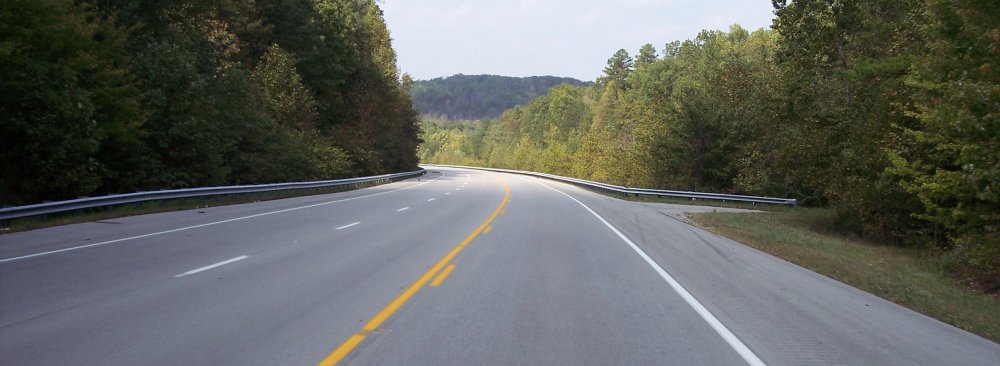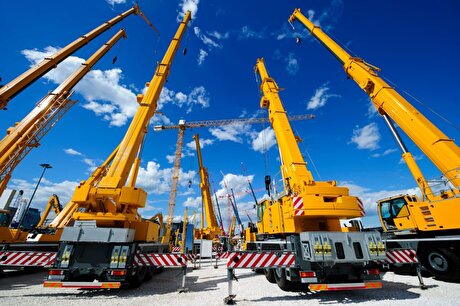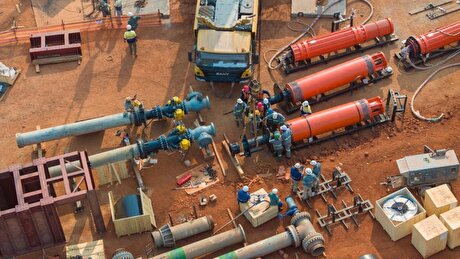
Cement Replaces Bitumen in Major Highway Project

The move comes as the cement industries struggle to address the crisis the sector is facing with the massive 16-million-ton inventory and no demand at home or in overseas markets.
The 182km highway in South Khorasan Province will connect the southern part of the country to the shrine city of Mashhad, the capital of Khorasan Razavi Province. According to Fars News Agency, lack of funding delayed the completion of the project for over 11 years.
The utilization of cement instead of bitumen in road and pavement construction in a bid to stimulate demand in the domestic cement market was first suggested by industry officials in a meeting on August 8. It was attended by the Minister of Industries, Mining and Trade Mohamamdreza Nematzadeh, his deputy Jafar Sargheyni and head of Iran Cement Employers Association, Mohammad Atabak.Representatives from the Ministry of Roads and Urban Development, Central Bank of Iran, and the Management and Planning Organization also attended.
According to the CEA chief, the proposed replacement is justified as bitumen can be easily marketed overseas.
Furthermore, concrete surfaces are stronger and more durable than asphalt. They can be grooved to provide a durable skid-resistant surface.
A notable disadvantage, however, is that they typically come at higher initial cost, and can be more time-consuming to construct. Yet, this cost can be offset through the long life span of concrete roadways. Concrete pavement can be maintained over time utilizing a series of methods known as concrete pavement restoration.
Nematzadeh has called for the use of concrete instead of structural steel in new buildings with the dual aim of boosting the safety of structures as well as stimulating domestic demand for the struggling cement industry.
“The cement industry faces the double whammy of loss of export markets and slump in the construction sector,” he was quoted by ISNA as saying at the 16th International Building and Construction Industries Exhibition, Iran Confair 2016, held last week.


Gold price edges up as market awaits Fed minutes, Powell speech

Glencore trader who led ill-fated battery recycling push to exit

Emirates Global Aluminium unit to exit Guinea after mine seized

Iron ore price dips on China blast furnace cuts, US trade restrictions

Roshel, Swebor partner to produce ballistic-grade steel in Canada

Trump weighs using $2 billion in CHIPS Act funding for critical minerals

US hikes steel, aluminum tariffs on imported wind turbines, cranes, railcars

EverMetal launches US-based critical metals recycling platform

Afghanistan says China seeks its participation in Belt and Road Initiative

Energy Fuels soars on Vulcan Elements partnership

Northern Dynasty sticks to proposal in battle to lift Pebble mine veto

Giustra-backed mining firm teams up with informal miners in Colombia

Critical Metals signs agreement to supply rare earth to US government-funded facility

China extends rare earth controls to imported material

Galan Lithium proceeds with $13M financing for Argentina project

Silver price touches $39 as market weighs rate cut outlook

First Quantum drops plan to sell stakes in Zambia copper mines

Ivanhoe advances Kamoa dewatering plan, plans forecasts

Texas factory gives Chinese copper firm an edge in tariff war

Energy Fuels soars on Vulcan Elements partnership

Northern Dynasty sticks to proposal in battle to lift Pebble mine veto

Giustra-backed mining firm teams up with informal miners in Colombia

Critical Metals signs agreement to supply rare earth to US government-funded facility

China extends rare earth controls to imported material

Galan Lithium proceeds with $13M financing for Argentina project

Silver price touches $39 as market weighs rate cut outlook

First Quantum drops plan to sell stakes in Zambia copper mines

Ivanhoe advances Kamoa dewatering plan, plans forecasts

















